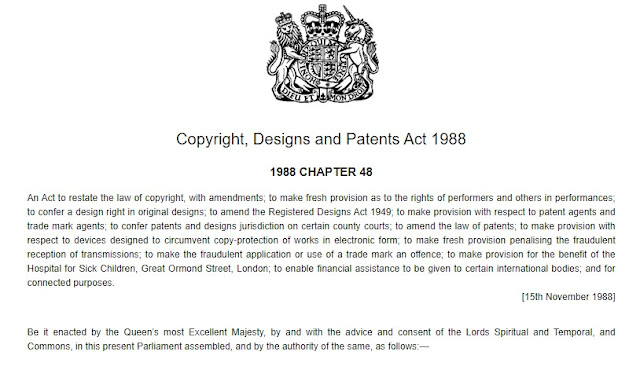P1
Social Media Profiles
In this blog post, I am going to be explaining the purpose of a personal media profile and what it is used for. I will also be finding examples of media profiles and will be explaining the content and purpose of each one.
A personal media profile is a representation of an individual's identity and interests through various forms of media. It serves as a platform for self-expression and communication with others. Media profiles can be categorized into two main types: physical and digital.
Physical media profiles refer to tangible forms of self-presentation, such as photo albums, scrapbooks, or physical portfolios. These profiles offer a tangible and tactile experience, allowing individuals to showcase their creativity and personal touch. Physical media profiles are often best used in situations where a physical presence is valued, such as job interviews, networking events, or personal interactions where sharing physical artifacts can create a deeper connection. The benefits of physical media profiles include the ability to curate and organize content in a personalized manner, fostering a sense of nostalgia, and providing an intimate and unique experience for viewers.
On the other hand, digital media profiles are created and shared through online platforms, including social media, personal websites, blogs, and multimedia portfolios. Digital profiles offer a wide variety of possibilities for self expression, allowing individuals to combine various forms of media such as text, images, videos, and audio. They also provide a global reach and instant accessibility, enabling individuals to connect with a vast audience. Digital media profiles are best used in situations where online presence and engagement are essential, such as professional networking, showcasing creative work, or building an online brand. The benefits of digital media profiles include the ability to reach a broader audience, easy and quick sharing of content, interactive features, and the potential for viral exposure.
Real Life Examples
Below are some real life examples of personal media profiles. I will be comparing them to each other, in terms of how both of them are effective and are generally good examples of personal / social media profiles.
The first example is a graphic designer called Sarah Johnson. Sarah Johnson is an accomplished graphic designer who possesses an impressive personal media profile that effectively showcases her talents that can be viewed here: https://www.sarahjohnson-design.com/aboutt. The impact of her profile is evident through her website This online platform serves as a testament to Sarah's artistic abilities and provides a captivating window into her portfolio. The art gallery section of her website is a visual feast, presenting a wide array of design projects, including illustrations, branding work, and visual storytelling that can be seen in the screenshots below. Each project is thoughtfully curated, demonstrating Sarah's meticulous attention to detail and artistic finesse. The website's layout and presentation are not only aesthetically pleasing but also well-organized, ensuring a seamless browsing experience for visitors. In addition to her portfolio, Sarah maintains a blog where she generously shares insights into her creative process, design inspirations, and industry trends. This blog serves as a valuable resource for aspiring designers and fosters engagement and connection with her audience. With clear navigation and user-friendly features, Sarah's website enables visitors to effortlessly explore her body of work, gaining a comprehensive understanding of her skills and expertise as a graphic designer.
Another effective example of a personal profile I have found is from Jennifer Lee, A marketing manager from the United States. Jennifer Lee, a seasoned marketing professional, possesses an exemplary CV that effectively showcases her skills and experience. Her LinkedIn profile, which can be found at https://www.linkedin.com/in/jenniferlee/, serves as a compelling representation of her professional accomplishments. Let's explore the key elements that contribute to the effectiveness of her CV profile. At the outset, Jennifer incorporates a concise and impactful professional summary that concisely captures her expertise, industry experience, and notable achievements. This summary sets the stage for the comprehensive overview of her career journey.
In the section dedicated to work experience, Jennifer provides a detailed account of her employment history, encompassing job titles, company names, and dates of employment. Each entry delves into her specific responsibilities, highlighting her role in driving successful marketing campaigns, leading teams, and attaining tangible business outcomes. By emphasizing measurable results and notable achievements, she effectively demonstrates her competence and value as a marketing professional.
Jennifer further solidifies her professional profile by highlighting her core skills and areas of expertise. By showcasing her proficiency in various facets of marketing, such as digital marketing strategies, campaign management, data analytics, and brand development, she establishes her competence in key areas of her field. The education and certifications section of Jennifer's CV underscores her commitment to continuous growth and development. She highlights her relevant degrees, certifications, and additional training, which serve as a testament to her dedication to staying current in the dynamic marketing landscape.
In summary, Jennifer Lee's CV exemplifies a compelling and effective representation of her qualifications, experience, and accomplishments within the marketing realm.
CV + Cover Letters
A curriculum vitae (CV) and a cover letter are essential documents used in the job application process. They play distinct but interconnected roles in presenting an individual's qualifications, skills, and experiences to prospective employers. Let's explore the purpose and key elements of each document, as well as why including certain features is crucial for their effectiveness.
A CV is a comprehensive summary of an individual's educational background, work experience, skills, achievements, and other relevant information. It provides a detailed overview of an individual's professional journey and serves as a foundation for assessing their qualifications. A well-crafted CV presents a clear and organized picture of the candidate's capabilities, making it easier for employers to evaluate their suitability for a specific role.
Several elements contribute to making a CV good. Firstly, it should have a clear and professional format that is easy to read and navigate. A well-structured CV includes distinct sections for personal information, professional summary, work experience, education, skills, and other relevant details. Each section should be presented in a concise and coherent manner, using bullet points or brief paragraphs to highlight key information.
In terms of content, a good CV emphasizes relevant work experience and achievements, focusing on measurable results and outcomes. It should showcase the candidate's expertise, skills, and accomplishments related to the desired position. Tailoring the CV to the specific job requirements and including keywords from the job description can enhance its effectiveness.
Including certain features in a CV is crucial for several reasons. First, a clear and professional format ensures that the CV is visually appealing and easy to navigate, enabling employers to quickly locate key information. Second, emphasizing relevant work experience and achievements demonstrates the candidate's ability to contribute value to the prospective employer. By showcasing specific accomplishments, such as meeting targets, leading projects, or implementing successful strategies, a candidate can establish their competence and expertise.
Furthermore, it is essential to include educational qualifications, certifications, and training relevant to the desired role. These details validate the candidate's knowledge and expertise in their field and demonstrate their commitment to professional growth. Additionally, including a section on skills highlights the candidate's relevant proficiencies and abilities, further substantiating their suitability for the position.
A cover letter is a complementary document to the CV that provides an opportunity for the candidate to express their interest in a specific position and elaborate on their qualifications. It allows the candidate to demonstrate their communication skills, express their motivation, and provide context for the information presented in the CV. A good cover letter is personalized, well-structured, and concise, addressing the employer's needs and outlining how the candidate's skills and experiences align with the requirements of the role.
In conclusion, a well-crafted CV and cover letter are vital components of a job application. A strong CV presents a clear and organized overview of the candidate's qualifications, emphasizing relevant work experience, accomplishments, and skills. Including specific features such as a professional format, measurable achievements, and tailored content enhances the effectiveness of the CV. The cover letter complements the CV by allowing the candidate to express their interest, motivation, and suitability for the position. Together, these documents provide employers with valuable insights into the candidate's capabilities and serve as powerful tools in securing job opportunities.
To summarise this report as a whole, I have explained what a personal media profile is and what the different types are and how each of them are effective in their own ways. I have also provided real life examples of personal profiles and have given explanations on why I believe that they are strong examples that stand out compared to other profiles. With the different formats explained and with what I have researched, I will be able to implement my new knowledge into this unit.








Comments
Post a Comment